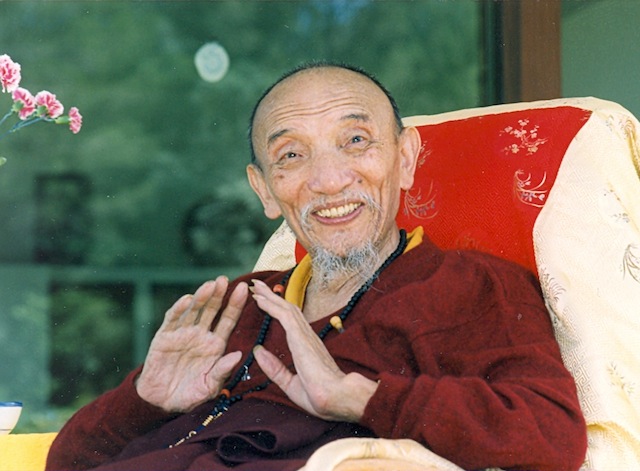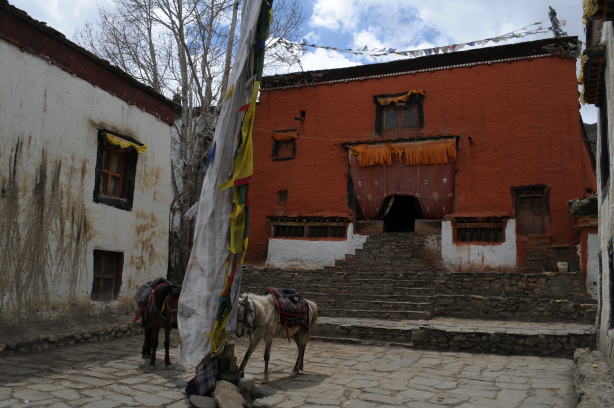If you want to experience a moving Buddhist ritual on the wisdom of finding inner peace in our disorderly world, a Kalachakra Initiation would be an excellent choice.
The twelve-day teaching tradition is held most every year, usually led by His Holiness the Dalai Lama and attended by hundreds of monks, from most erudite to ordinary. More than a hundred thousand people typically make the pilgrimage from all over the world, including remote parts of the Himalaya.
The 2017 gathering was earlier this month in Bodh Gaya in north-eastern India. Nearly 200,000 people made the pilgrimage despite India’s unanticipated restrictions on cash transactions and China blocking some 7,000 Tibetans from participating.
Bodh Gaya is the town Buddhists have long revered as the holy place where Siddhartha Gautama attained enlightenment as Buddha more than 2500 years ago.
Monks and others students in Kalachakra rituals take vows of compassion and helping others. The multitudes attending receive blessings for long life from holy teachers. An intricate sand mandala, seven feet in diameter, is crafted over eight days then left only to memory as those sands are swept up and poured into a nearby stream or river, releasing “positive energy” before the crowds return home.
As His Holiness has explained, “The initiation to the Kalachakra is one of the most important….because it takes everything into account, the body and the human mind, and the whole external aspect – cosmic and astrological. We firmly believe in its power to reduce conflict and we believe it is capable of creating…peace of spirit and therefore peace in the world.” Speaking in Bodh Gaya on the final day of this year’s event, he added, “The best gift for me as your master is to put into practice the teachings I have given you.”
On very rare occasions, once every twenty years, this sacred gathering is held for people in remote areas.
By sheer coincidence, we came upon one during our first trek into Mustang twenty-five years ago.
It was at Ghar Gompa, one of the oldest monasteries in Mustang, built eight centuries ago. (Photograph above is from 2012.) Hundreds of people had converged. Tents were being pitched everywhere. In one, we were introduced to a thin, elderly man with a stringy white goatee and a gentle nature.
“He looked like a sage from an old western movie,” my youngest daughter Eileen Bourgade remembers.
This elderly man, as we soon learned, was one of the great living masters of Tibetan Buddhism, Chogye Trichen Rinpoche. He had been one of the Dalai Lama’s teachers, also escaping Tibet in 1959, and helped reestablish Tibetan Buddhism in Nepal.
He was the classic lovely, sweet lama. (See photo below.) As our visit ended, he gave us an old Tibetan carpet and absolutely insisted we take 30 rupees for buying tea along the rest of our journey to LoMontang.
“No, no,” I said. “We’re fine.” But he insisted.
Fifteen years later, while in Kathmandu and again totally by chance, we had a second unplanned audience with the Rinpoche. He was very frail now, in his late eighties, but, amazingly, still remembered our meeting in Ghar Gompa.
“Here,” he motioned gently, as we were leaving, “take this with you,” waving a 100-rupee currency note in my direction.
I smiled and tried to signal once again that we had plenty of cash. But he insisted, so, with admiration and great respect, I tucked the rupee note into a pocket. The Rinpoche passed away later that year.
We still have that old Tibetan carpet he gave us twenty-five years ago at Ghar Gompa. I would never think of parting with it.

Ghar Gompa photo via website of U.S. Embassy Kathmandu; Chogye Trichen Rinpoche photo via website of Tibetan Buddhist Society of Canberra


Leave a Reply